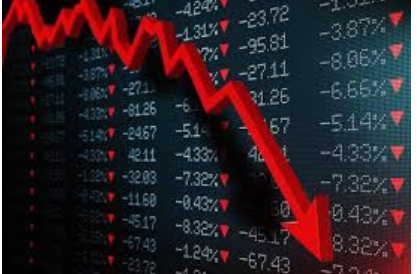Er der optræk til det store kursfald på aktiemarkedet? Det optager investorerne på Wall Street, der holder skarpt øje med denne uges centralbankmøde. Nu vokser tvivlen, om inflationen kun er midlertidig, som centralbanken hidtil har sagt. Der er voksende frygt for, at inflationen bliver vedvarende, og at det vil ramme aktiemarkedet, mens renterne stiger. En del banker som Morgan Stanley har advaret om kursfald. Aktiemarkedet et steget med 13 pct. i år og med hele 90 pct. siden pandemiens start i marts 2020.
Wall Street Week Ahead: Fed meeting looms for stocks as inflation worries collide with ‘Goldilocks’ markets
Investors will be zeroing in on the Federal Reserve’s monetary policy meeting next week as a “Goldilocks” market environment that has helped lift stocks to record highs and tamed a bond selloff is tested by rising inflation.
Stocks have climbed steadily in recent weeks and now stand at fresh records, extending a rally that has seen the S&P 500 gain 13% this year and nearly 90% from its March 2020 low. U.S. government bonds have also rallied after their first-quarter selloff, with the benchmark 10-year Treasury yield, which moves inversely to prices, recently at 1.46%, some 30 basis points below its first quarter highs.
Some of those gains have been predicated on the Fed’s assurances that rising inflation will not last long enough to warrant a sooner-than-expected end to easy-money policies. Signals that the Fed is growing less confident in those assumptions could unsettle stocks, which have benefited from quantitative easing, and hurt bonds, as rising prices erode the value of longer-dated debt.
Investors “are going to be looking for signs that the Fed might believe that inflation is more permanent,” said Michael Arone, chief investment strategist for State Street Global Advisors.
The Fed has maintained that it has the tools to deal with accelerating inflation. The central bank may open discussion at the Tuesday-Wednesday meeting about when to begin unwinding its $120 billion per month purchases of government bonds, though most analysts don’t expect a decision before the Fed’s annual Jackson Hole, Wyoming, conference in August.
For now, it appears some investors are coming around to the Fed’s way of thinking on inflation. Stocks on Thursday brushed off data showing that consumer prices rose in May at their fastest annual pace in 13 years, as the S&P 500 hit a new record. By contrast, a much higher-than-expected inflation number last month caused a selloff in stocks.
Strong inflation numbers aside, recent data has offered snapshots of an economy that is strengthening but does not appear to be close to overheating. Employment, for instance, remains about 7.6 million jobs below its February 2020 peak while the latest monthly report fell short of economists estimates.
“We are making progress, but the economy is not completely on fire and a runaway train where the Fed has to take action,” said Chris Galipeau, senior market strategist at Putnam Investments. “That puts us in the ‘Goldilocks’ scenario.”
Still, others worry that markets have grown too complacent on inflation and other risks that could derail the current rally, from potential higher taxes to peaking economic growth rates.
Analysts at BofA Global Research on Friday outlined a number of reasons that inflation may be more sustained than many expect, including second-tier indicators such as the National Federation of Independent Businesses survey of small businesses showing price pressures are filtering to customers.
“The list of excuses for transitory inflation is getting long. The risk of higher, more persistent inflation is growing,” BofA’s analysts wrote.
More broadly, bullish sentiment among individual investors has been above its historical average of 38% for 25 of the last 30 weeks, according to the American Association of Individual Investors. Bearish sentiment, meanwhile, is below its historical average of 30.5% for the 18th consecutive week.
“At current levels, pessimism remains unusually low,” the AAII said on its website. “Historically, below-average readings for bearish sentiment have been followed by below-average six- and 12-month returns for the S&P 500 index.”
Bulls can point to plenty of reasons for stocks to remain strong. Most investors believe the Fed will only start tapering its bond purchases in late 2021 or early next year. Bets in the eurodollar futures markets show investors believe the Fed will start hiking its benchmark rate in late 2022.
Rising estimates for corporate profit growth are also supporting stocks. S&P 500 earnings are now expected to jump 36% this year, compared to an April estimate of 26% growth, with earnings expected to rise another roughly 12% in 2022, according to Refinitiv IBES.
That has not stopped some of the world’s biggest banks, including Morgan Stanley, from warning in recent months that the market is primed for a sharp pullback.
Matthew Miskin, co-chief investment strategist at John Hancock Investment Management, still favors stocks over bonds, with a preference for the healthcare, industrials, technology and communication services sectors.
“We are due for some volatility and we have been saying that, and yet dips have been met with very strong demand,” he said.



